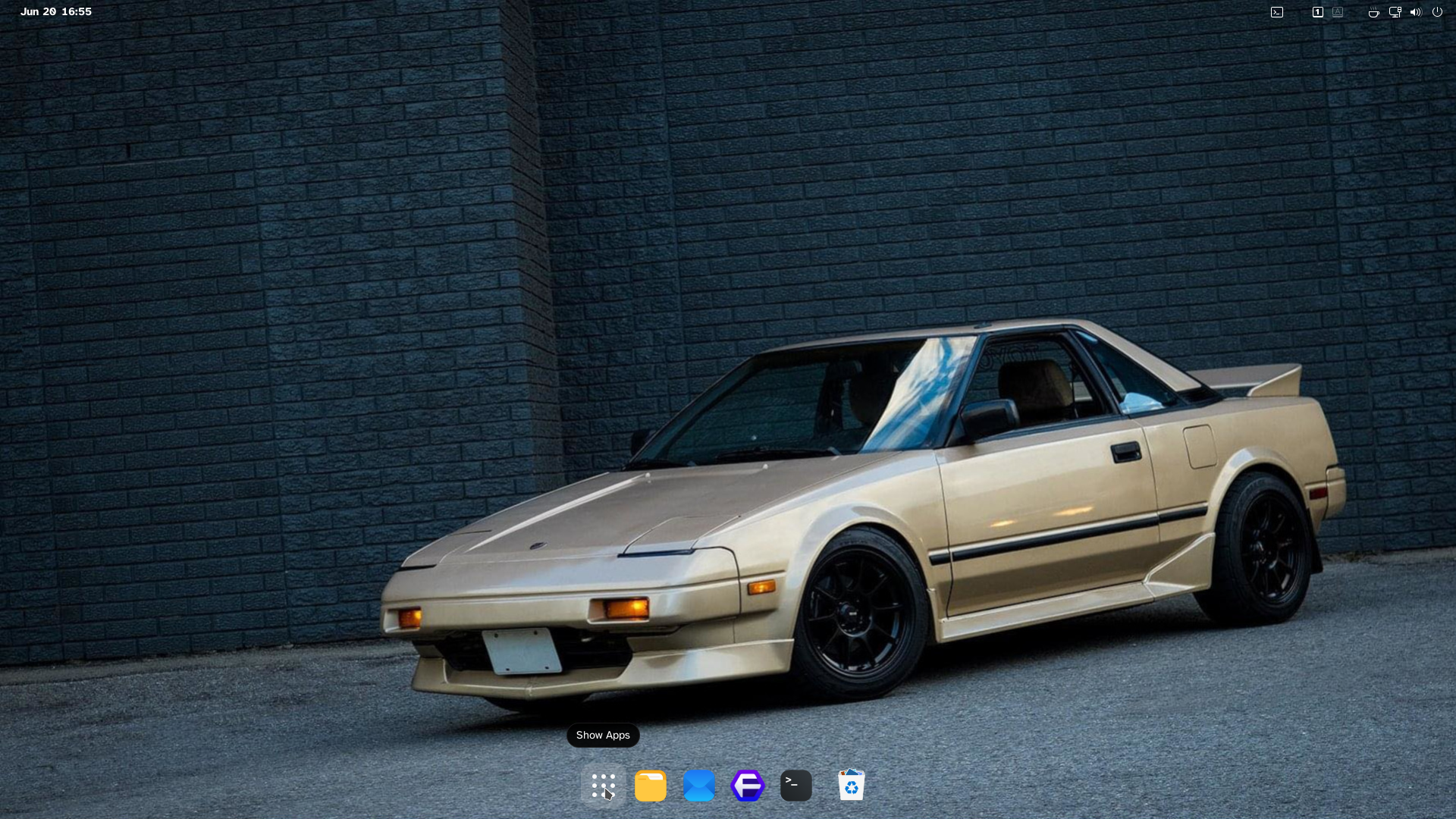The TL;DR
Migrating from Microsoft Windows or Apple macOS to Linux?
Overwhelmed by the lingo? Trying to make sense of where to start?
Consider this post as a primer to get up to speed.
Linux is an operating system kernel. Think of it as the single program that runs on your computer to connect your software to your hardware. The hardware is that physical box that the monitor, keyboard and mouse plug into. The software is the programs that draw text and images on the screen. This is simplistic but accurate enough for this post.
A Linux distribution is an operating system that uses the Linux kernel. Examples of Linux distributions are Debian Linux, Ubuntu Linux, Linux Mint, and Fedora Linux. There are literally hundreds of different Linux distributions.
Each of these distributions or operating systems have been created to work in specific ways by their creators. Some exist to be general purpose and stable operating systems to run productivity applications. Some are created by corporations specifically to work with their custom hardware or software. Some distributions are developer focused and some are meant to be used to replace Windows for gaming.
Because of the design decisions around each Linux distribution’s creation, it is important to understand what each distribution was designed for and it’s intended usage.
For the purpose of this post we’ll assume everything written here is referencing traditional Intel and AMD CPU architectures. Also, this article is desktop computer focused and not intended to be a reference for selecting a Linux distribution for a server.
As a general, sweeping recommendation of which distribution to pick it boils down to whether the reader is an IT guru, computer enthusiast or someone that just wants to get things done and get on with their life.
If one wants to just get things done and not get involved with the fine details, then picking a straightforward distribution like Linux Mint or Elementary Linux can be a quick way to get up and running and using the computer more or less immediately.
For an IT guru that doesn’t have previous Linux experience but perhaps some UNIX or router operating system experience, then Debian or Fedora could be a good choice.
A computer enthusiast may want to explore Arch Linux or Gentoo Linux but I’d still suggest starting with Debian or Fedora initially till some familiarity has been developed with the Linux way of doing things. Embrace virtual machines.
The Nerdly Bits
Each Linux distribution has a different design philosophy.
Some of the primary differences can be intended usage, software freedom, or architectural decisions.
It’s important to be aware of this before investing time into a distribution.
The Linux Distributions Family Tree
Taken from Linux Distribtion on Wikipedia.
Linux has a very rich history.
There are some important roots in this tree:
- Slackware
- Debian
- Red Hat
- Arch Linux
Of these, Slackware, Debian, and Arch Linux are community supported operating systems. Red Hat is a commercial operating system.
Slackware is the more esoteric or fringe of these four and does not have the broad appeal of the other three. It’s great, just a popularity thing.
Debian is the root for many operating systems including Ubuntu & derivatives, Linux Mint, Raspberry Pi OS, and other well known distributions.
Red Hat is a corporate, commercial operating system. Fedora Linux is the upstream community supported version of Red Hat Enterprise Linux. Red Hat is the Fedora project’s primary sponsor.
Software Packaging
There are three main software packaging systems used in the different distributions.
There are distributions based upon Debian and as a result use the Debian method of software delivery via Debian packages (.deb files).
Distributions based upon Red Hat/ Fedora, use Red Hat style .rpm packages.
Distributions based upon Arch Linux use pacman packages (.pkg.tar.zst).
And other distributions, including Slackware, not based upon these three main types use their own package types.
This is important to be aware that some distributions have a larger set of software available in their operating system software repositories than others - or the versions in the distribution specific repository are quite dated.
It is less of an issue nowadays though since Linux distributions support the other two main external methods of software packaging and delivery: Flatpak and AppImages. These two packaging methods let any Linux operating system run the latest, greatest versions of software that is available provided the flatpak or appImage exists.
Ubuntu additionally has it’s own proprietary snap packaging system.
Distributions and Their Intended Usage and Philosophy
As mentioned above, Linux distributions have intended usage and goals. It is important to ascertain if these goals and philosophy of usage align with your own goals. Most distributions will have a page on their website about their intents.
Debian is particularly clear about how and why they operate the way they do. Other distributions may or may not have this clarity. Always investigate the distribution project’s website if this is important to you.
What Are Your Goals?
Let’s back up a bit. If you’ve come to this web page you are likely considering installing Linux on a computer.
Are you doing this to upgrade your Windows 10 computer that will no longer receive operating system or security updates starting in late October?
Are you curious about Linux and browsing around for information?
What kind of computer user are you? Do you care about computers or just treat them as a black box tool to deal with communications and creating things?
Are you an IT professional that sees the writing on the wall and wants to get up to speed on Linux?
Are you a computer hobbyist and enlarging your tool set?
Are you a gamer?
Recommendations
Some of what I’m going to recommend may be contentious or debatable depending on whom you ask for a second opinion.
The important thing to realize is that all of these Linux distributions can (mostly) do the same thing. By picking one over the other you are not giving anything up in terms of what can be done with the computer. If you want to do CAD work with FreeCAD then install FreeCAD on whatever distribution you are running. If you want to do Windows gaming then install Wine, Bottles, Proton, etc. and then game. A gaming distribution is just a Linux distribution that has the gaming subsystems pre-configured since it is their focus.
Commercial entities are more likely to rug pull or change the terms and conditions of free versions of software than a community project. For this reason I will always recommend using the community version of any software, including Linux distributions. That said, you need to be careful about the strength and scope of a community project. Is it just some person in their mom’s basement making lots of noise on socials or is the project a more professional affair and resilient to change and changing interests?
Support is important. There needs to be a critical mass of users and distribution developers to support the distribution. If you have a problem with the software then you may need to post to a forum or code repository support board or some other platform for help. If by looking around in the support section you see the list of past unresolved issues is large with no responses then that tells you that you may not get help if you get into trouble.
Also, some will look down their noses at a “new Linux user friendly” distribution. All being friendly means is that the distribution is polished and has all (most?) of the rough edges filed off. It is still as powerful as any other distribution. One could argue it’s more powerful since it doesn’t waste time with problems and configuation issues that shouldn’t exist.
Whatever you pick today does not need to be the Linux distribution you use in the future. There’s nothing saying you have to stick with a specific distribution if you decide you’d prefer a different one a few days or weeks from now. It’s Linux so all the skills you will develop are transferable between distributions. All it costs is time.
If you want a Linux distribution to replace Windows or macOS and you don’t really care about computers that much, just treat it as a tool to write and create things, then take a serious look at Linux Mint and Elementary OS. These distributions create a cohesive desktop computer environment and provide access to software that can achieve most any goals via their built-in software stores. Linux Mint is visually reminiscent of Windows while Elementary is visually reminiscent of macOS. Both are Ubuntu based and Linux Mint also has a Debian based version (LMDE). Both are great for getting up and running quickly and just getting “stuff” done and getting on with your life.
If you are an IT professional consider Debian or Fedora. Both can provide complete desktop experiences during the install phase. More importantly, they will be finger memory and mostly architecturally compatible with your work place’s servers that are running Debian, Ubuntu, or Red Hat Enterprise Linux. Ideally, you should install and learn both over time.
If you are a computer enthusiast and are looking to jump straight into the deep end then take a look at Arch Linux and Gentoo Linux. Both are awesome distributions but will consume huge amounts of time. If chewing up huge amounts of time doesn’t sound like fun, then revert to the IT professional recommendations above. If there is some funky cool thing you want to try that is not easily available under Debian or Fedora you can always spin up a virtual machine and play with it there. The caveat to this chioce is that you should have another computer around to get day to day work done when pacman -Syu breaks your computer and you have to spend time fixing it.
I’m not much of a gamer so I can’t really make a solid recommendation on what to try in this space. I’ve seen Bazzite, CachyOS, and Nobaru mentioned in my social media travels. At some point I’ll need to move my Digital Combat Simulator and Assetto Corsa setups to Linux. I just don’t play games/simulators lately so haven’t spent any time on this side of things. Perhaps I’ll write a new article with my experiences if I get back into gaming. I’d be inclined to start with a standard Linux distribution and make it game but maybe I’ll change my mind when I try it.
What not to install as a new user?
If you have an NVIDIA display card then don’t install Alpine Linux. Alpine Linux doesn’t support NVIDIA proprietary drivers due to Alpine being based on the musl C library. Sad but true.
Take a pass on the new Linux operating systems developed by the Gnome Foundation and the KDE Community. They are not ready for daily use and may never be. The are young reference platforms for development of these desktops at this point. If curious, sure spin up a virtual machine but I would not install it on my daily driver computer for the long haul.
Avoid anything with a convoluted install methodology. Too many steps to go wrong along the way and getting help could be a pain.
There’s others. Stick with mainstream Linux distributions.
Remember what you read about hard mode above.
If you’d like to comment, I posted a link to this article on Mastodon.
Further Reading From This Site
Some other articles that may be of interest:
Linux:
Gnome Desktop:
External Links to Linux Distributions
These are mentioned in this article, in alpabetical order:


